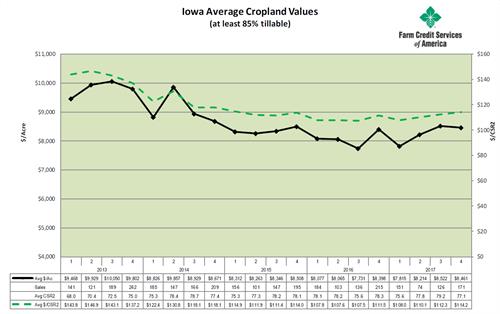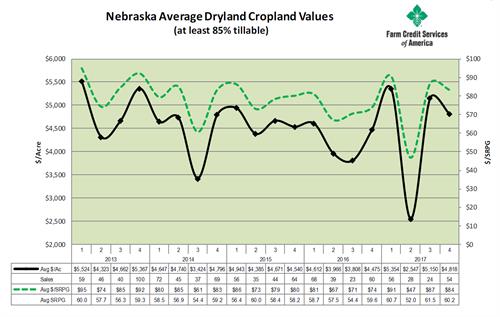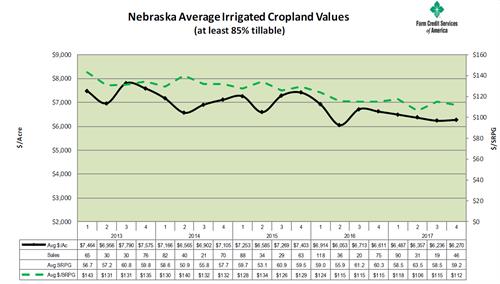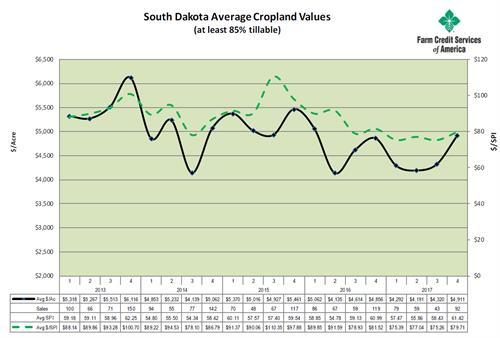Farmland values in the grain belt states served by Farm Credit Services of America (FCSAmerica) stabilized in 2017, a reflection of continued market demand for quality land.
Sales of higher quality farm ground contributed to an uptick in average sale prices in 2017. Where prices dropped at local or regional levels, sales generally involved lower quality land. Average sale prices rose slightly in Iowa, Nebraska and South Dakota. Wyoming had too few sales to identify a trend.
FCSAmerica compiles sales records and, twice a year, appraises 64 benchmark farms. The cooperative’s objective is to track real estate values without the influence of changes in land quality on sale prices. Iowa and Wyoming saw modest overall increases in real estate values in 2017, while Nebraska and South Dakota declined.
Below is the average state-by-state change in benchmark farm values through 2017. The number of benchmark farms in each state is indicated by parentheses.
|
State
|
Six Month
|
One Year
|
Five Year
|
Ten Year
|
|
Iowa (21)
|
1.4%
|
1.8%
|
-12.8%
|
82.1%
|
|
Nebraska (18)
|
-2.8%
|
-2.8%
|
-5.1%
|
130.2%
|
|
South Dakota (23)
|
-1.3%
|
-3.1%
|
15.6%
|
123.3%
|
|
Wyoming (2)
|
2.5%
|
3.2%
|
38.5%
|
30.1%
|
“Overall real estate values have stabilized in the past year, but continued low profit margins and potential for an increase in sales activity could put downward pressure on real estate values,” said Tim Koch, FCSAmerica’s chief credit officer.
Farmland values remain well below the market’s peak of three to four years ago. Overall, values are off about 20 percent.
IOWA
Eleven benchmark farms saw an increase in value in the last six months of 2017, while 10 showed no change.
Overall farmland sales activity was down 20 percent. However, public land auctions increased 2 percent compared to the previous year. The percent of auction “no sales” fell to 2.7 percent, down from 3.2 percent in 2016.
The average price on completed sales by quarter:

NEBRASKA
Five benchmarks farms increased in value, while two showed no change. The remaining 11 declined an average of 6.1 percent.
Total sales declined in 2017, with dry cropland dropping 15 percent and irrigated 25 percent compared to 2016. Public land auctions dropped 16 percent and auction “no sales” increased to 5.2 percent, up from 2.2 percent in 2016.
The average price on completed sales by quarter for dry and irrigated cropland:


SOUTH DAKOTA
Values were unchanged on 14 benchmark farms in second half of 2017. Three farms saw an increase and six declined.
Total sales were down 18 percent compared to 2016. Public land auctions were down 16 percent and “no sales” increased to 6.1 percent, up from 3.2 percent.
The average price on completed sales by quarter:

WYOMING
The one cropland benchmark farm increased in value by 5.1 percent. The pasture unit saw no change in value in the last six months of 2017.
Sales have been and continue to be very limited in Wyoming.

